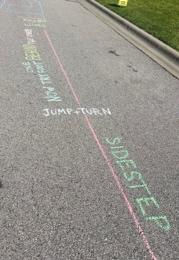Shoulder and Neck Pain
- All Care Therapies

- Jun 24, 2021
- 2 min read
The shoulder is a very complex region of the body with many bony structures, ligaments, muscles, tendons, and nerves that make up four separate joints. Mechanical injuries of the shoulder are common and can result in dysfunction in one, some, or all of these shoulder joints. However, often times shoulder pain and dysfunction can be a result of an issue with the cervical spine rather than the shoulder joints themselves. The cervical spine is made up of 7 vertebrae and 8 nerve roots. Nerves travel down the spine, exit between each vertebrae, and travel to the arms to supply them with sensation and motor function of the muscles.
It is very important to determine the true cause of shoulder pain to provide the best treatment plan possible. If the origin is truly from the neck, it can be due to radiculopathy, which is when the cervical nerve root becomes compressed. A cervical nerve root can become compressed for a variety of reasons but some of the most common reasons are due to disc herniation, arthritis/disc degeneration, and stenosis (a narrowing of the canals in the spine where the nerve roots travel). It is very common for compression to occur due to prolonged postures, much like low back pain. Cervical dysfunction that manifests as shoulder pain is often a burning type of pain, can result in shoulder weakness, and can be eased with certain positions of the shoulder such as abduction (some patients are more comfortable resting their forearm on top of their head to reduce symptoms).
Determining the root cause of pain is very important for choosing the correct interventions to address the true source of pain. Feel free to contact our team to set up an evaluation of your shoulder pain to address the true source and kickstart your injury recovery process! Your Physical Therapist will use a combination of techniques for pain reduction, postural restoration, and functional strengthening. Below are pictures of some common exercises to promote improved posture and strength to reduce nerve root compression.

Sources
Bokshan SL, DePasse JM, Eltorai AE, Paxton ES, Green A, Daniels AH. An Evidence-Based Approach to Differentiating the Cause of Shoulder and Cervical Spine Pain. Am J Med. 2016 Sep;129(9):913-8.
Cervical retraction photo: https://www.summitortho.com/services/back-neck-spine/treatments/spine-exercises-library/retraction-chin-tuck/
Scapular retraction photo: https://www.verywellfit.com/seated-upper-body-workout-1231439?utm_source=pinterest




Comments